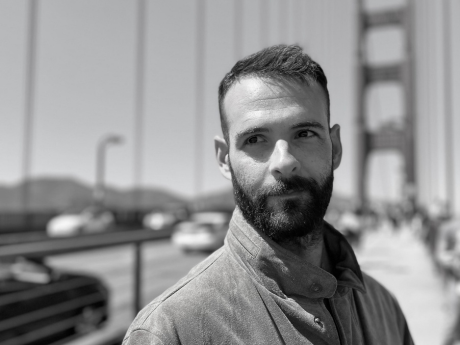Award Winners
Lucille Medwick Memorial Award - 2023
D.S. Waldman

Calder
It is the act of entering that creates loneliness. I stand, at first, in the corner and can’t bear it, the stillness of them—a child looking up from a crib, reaching. The door at my back leads to a balcony and is locked, boxing wind out of the composition.
The thing about art and especially three dimensional art is I expect it, always, to teach me something. The dialogue between the sun and rare flowers tracking east. The head turning to catch in its gaze the leg of a stranger as they leave the room. I begin to move, to walk about the mobiles.
Outside, on the balcony, leaves skitter in wind. Daylight in and out behind clouds. In the dream I’ve been having lately, is how one might begin a poem in this room. In mine, at a party, I look up and am told I’m the oldest in the room by several rotations. A condemnation. A measure of both time and distance.
Last night, waking from this or another dream, I looked through a scatter of Polaroids on the bedside table. In one, she stands next to a Joshua tree. The sky is blue and cold and she smiles, mouth closed, at the camera.
A family enters and the child moves about the mobiles in a whorl, a step ahead of his mother. Sunlight in a wedge on the wall, over a quotation from the artist: Disparity in form, color, size, weight, motion is what makes a composition. And when the child reaches for one of them, one of the red spades accenting the dark wire, his mother waits. She lets him touch it, once and briefly, before taking away his hand.
Jennifer Elise Foerster on D.S. Waldman
The poem, “Calder,” much like an Alexander Calder wire sculpture, speculates as a sketch in air, a composition in suspension. The composition of the poem enacts the mobile in the gallery: each section, or node, is connected through sonic and visual echoes, balancing the precarious structure while making visible the many dimensions of the space within which it exists. The poem’s spare prose passages are captivating as a series of artfully constructed gestures and glances toward the many dimensions of a body in space. The speaker is at once the onlooker, the mobile, and the poem; the observing body in the gallery, the object in the gallery, and the gallery itself. The poem not only sustains unknowingness (the unfulfilled expectation of understanding), as the best poems do, but does so by placing the various forms of unknowingness into suspension: presence and absence; stillness and motion; the static and the transitory; the perception of the self as both alone and in inevitable relation with the physical world.
**
D.S. Waldman is a Wallace Stegner fellow at Stanford University. His work has appeared in Kenyon Review, LitHub, Narrative, and Poetry Society of America. He serves as poetry editor at Adroit.
